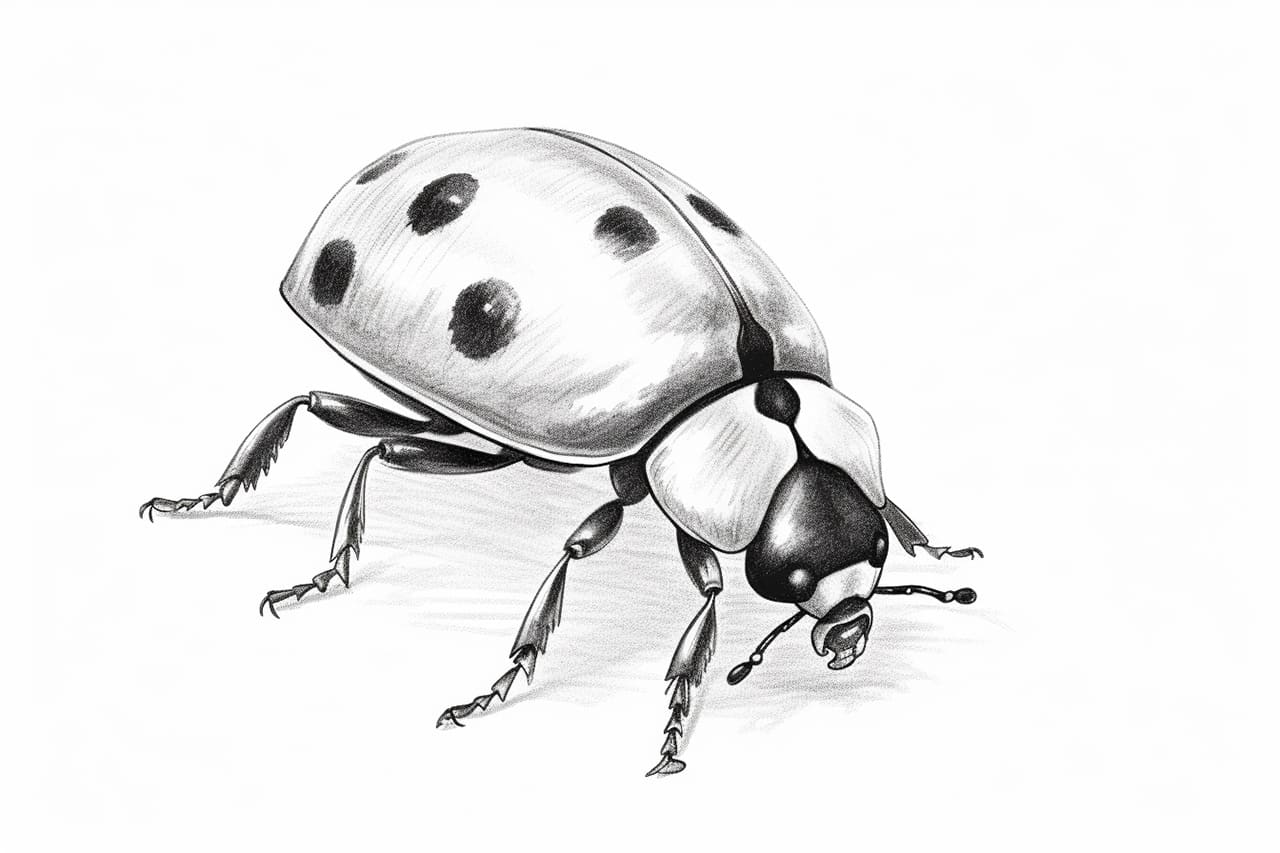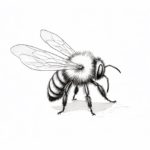Welcome to this step-by-step guide on how to draw a ladybug! Ladybugs, also known as ladybirds or lady beetles, are fascinating creatures that are loved by children and adults alike. With their vibrant colors and distinctive patterns, they make a fun and interesting subject for drawing. In this tutorial, you will learn how to capture the charm of a ladybug on paper using simple shapes and basic shading techniques. So, grab your sketchbook and let’s get started!
Materials Required
Before we begin, let’s gather all the materials you will need for this drawing:
- Pencil: Use a standard graphite pencil with a medium or soft lead for sketching and shading.
- Eraser: Have a good quality eraser handy to help you correct any mistakes or lighten the lines when needed.
- Paper: Choose a smooth surface paper suitable for drawing, such as drawing paper or sketch paper. A size of around 9×12 inches should work well.
- Colored pencils or markers: If you wish to add color to your ladybug drawing, you can use colored pencils or markers of your choice.
Now that you have everything you need, let’s dive into the steps of drawing a ladybug!
Step 1: Basic Outline
To start, lightly sketch an oval shape on your paper. This will be the main body of the ladybug. Remember to keep the lines soft and faint, as you will be refining them later. Next, draw a smaller oval shape at one end of the larger oval. This will be the ladybug’s head.
Step 2: Adding Details
Now, let’s add some details to our ladybug. Draw a short straight line in the middle of the head to separate it into two sections. Next, draw a small semicircle on each side of the head to represent the ladybug’s eyes. Inside each eye, draw a tiny circle to indicate the pupils.
Below the head, draw a curved line to connect the body. This will be the ladybug’s thorax. Then, draw a line parallel to the thorax, slightly below it, to create the ladybug’s abdomen. The abdomen should be slightly larger than the thorax.
Step 3: Wings and Spots
Ladybugs are known for their distinct wings and spots. To draw the wings, extend two curved lines from the sides of the thorax. The wings should have a soft and rounded shape. Repeat this step on the other side to complete the wings.
Next, let’s add the ladybug’s spots. Draw a series of small, oval-shaped dots on the wings and thorax. The number of spots can vary, but a typical ladybug has between five and seven spots on each wing. Don’t worry too much about making the spots perfectly symmetrical – slight variations can add character to your drawing.
Step 4: Legs and Antennae
Now it’s time to draw the ladybug’s legs and antennae. For the legs, draw three short lines on each side of the thorax. The lines should start from the bottom of the thorax and curve slightly outward. Add tiny ovals at the end of each leg to represent the ladybug’s feet.
For the antennae, draw two long, curved lines on top of the ladybug’s head. The lines should start near the eyes and curve slightly upward. Add small oval shapes at the end of each line to complete the antennae.
Step 5: Refining the Outline
Now that we have the basic structure of our ladybug, it’s time to refine the outline. Using the initial sketch as a guide, carefully darken the lines to give your drawing a more defined look. Pay attention to the curves and shapes of the body, wings, and spots. Use your eraser to remove any unwanted lines or mistakes.
Step 6: Shading and Coloring
To add depth and dimension to your ladybug drawing, we can incorporate some shading. Begin by identifying the light source in your drawing. This will help determine where the shadows should fall. Generally, the light source can be imagined as coming from the top-left or top-right corner.
Using your pencil, lightly shade the areas of the ladybug that would be in shadow. Start with the areas underneath the spots, the edges of the wings, and the underside of the body. Gradually build up the shading by adding more layers of graphite. Remember to blend the shading using a blending stump or your fingers to create a smoother transition between light and dark areas.
If you prefer to add color to your ladybug, now is the time to do so. Use colored pencils or markers to bring your ladybug to life. Ladybugs are typically red or orange with black spots, but feel free to get creative with different colors and patterns if you’d like!
Conclusion
Congratulations on completing your ladybug drawing! By following these step-by-step instructions, you have learned how to capture the charm of a ladybug on paper. Whether you choose to leave your drawing in black and white or add color, your ladybug is sure to be a delightful addition to your collection of artwork. Keep practicing, have fun, and enjoy the process of bringing nature’s beauty to life through your art!









